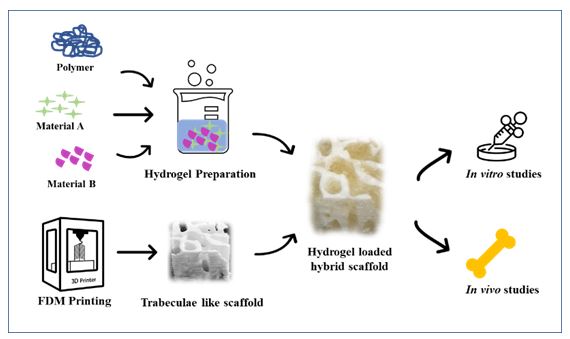PI Name & Affiliation:
Dr. Amit Kumar Jaiswal,
Associate Professor
Centre for Biomaterials, Cellular and Molecular Theranostics (CBCMT)
Vellore Institute of Technology, India
Co-PI Name & Affiliation:
Dr. Jitendra Satija,
Associate Professor
Centre for NanoBiotechnology (CNBT)
Vellore Institute of Technology, India
Dr. Manasseh Nithyananth,
Professor
Department of Orthopaedics
Christian Medical College, Vellore
Dr. Dan Inja,
Associate Professor
Department of Orthopaedics
Christian Medical College, Vellore
Funding Agency: DST-SERB
Scheme: Core Research Grant (CRG)
Overlay: Rs. 28,34,120/-
Duration of the Project: 3 Years

Dr. Amit Kumar Jaiswal

Dr. Jitendra Satija

Dr. Manasseh Nithyananth

Dr. Dan Inja

Project Description
Bone loss occurs in many cases of high impact trauma, bone cancer, and osteomyelitis which exceeds 5 cm in length and is called the segmental bone defect of a critical size, that cannot heal on its own. It can lead to complications like non unions and infections that sometimes lead to amputation of the limb. In such cases autograft is not a preferable choice and the existing techniques like distraction osteogenesis and Masquelet technique are extremely complicated surgery and the overall healing time is very long that poses a financial burden on the patient. The proposed work focuses on a hybrid bone graft obtained by embedding hydrogel in 3D printed polycaprolactone bone trabeculae like scaffold. It utilizes the usefulness of 3D printed PCL in terms of strength and hydrogel for ECM like environment. The hybrid construct will be obtained by loading the composite gel into the 3D printed scaffold followed by incorporating VEGF and mesenchymal stem cells for promoting blood capillary network formation and osteogenesis respectively. This composite construct will further be evaluated for its bone reconstruction ability in the rabbit femur segmental bone defect and neo bone formation will be evaluated by micro-CT and histology. The proposed work has novelty in terms of making a hybrid bone graft that will have bone-like trabecular network impregnated with resilient hydrogel.